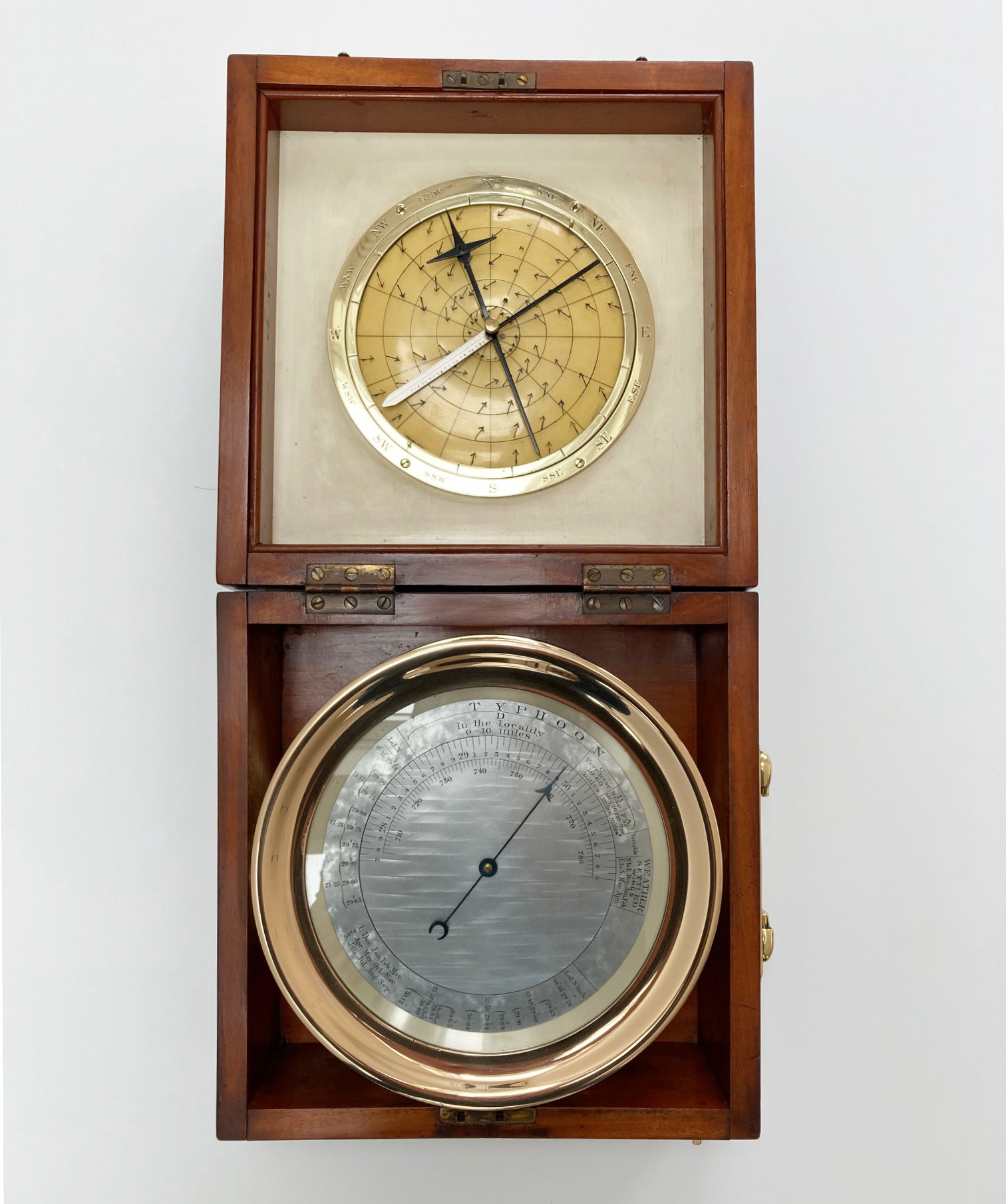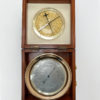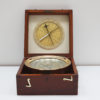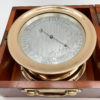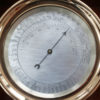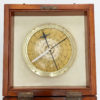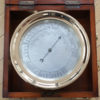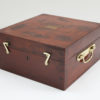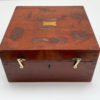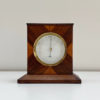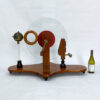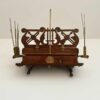Early Twentieth Century Cased Barocyclonometer or Typhoon Barometer
£3500.00
Early Twentieth Century Cased Barocyclonometer or Typhoon Barometer
Dimensions
H: 14 x L: 27.5 x D: 27.5 cms
Circa
1915
Country of manufacture
UK and Ireland
Description
For sale, a rare early Twentieth Century mahogany cased Typhoon barometer of barocyclonometer.
This fascinating instrument is comprised of a seven inch silvered dual ring dial within a very robust nine inch brass case measuring ten centimetres in depth. The barometer is screwed to the base of the mahogany transit case. The inner lid contains a second dial which is employed as a wind disc or cyclometer to be used in conjunction with the barometer when a storm is identified.
The inner barometer dial has a scale measuring 27.7 to 31.9 inches of barometric pressure with an outer ring which can be turned by manipulation of the outer brass bezel and contains numerous instructions for the setting of the barometer against the scale to gain accurate measurement against both position and time of year.
Perhaps the best description of its use if described in 1913 edition of “popular mechanics where it is described as follows:
“A Barocyclonemeter, an instrument which indicates the position of the centre of a cyclone at a distance of several hundred miles and permits the calculation of the direction in which the riot of wind is moving.
Cyclones, typhoons and other storms tend to move spirally towards a vortex. The delicate instrument, which is a combination of the aneroid barometer and the cyclonometer, will enable the captain of a vessel to learn not only where the centre of a cyclonic area is located, but also in what direction the destructive centre of the storm is moving. Around the dial of the barometer which is graduated in English and metric units, is a movable ring, which first must be set according to directions engraved on its lower half. These have reference to varying zones of latitiude and seasons, for each of which there is a definite pressure above which the conditions may be considered normal, that is, no cyclone within 500 miles need be feared. The ring is turned until a red arrow – that to the right of the segment marked “variable” – points to this normal pressure. If the barometer needle is to the left of the red arrow, the vessel must lie within a cyclonic area. The proximity of a storm being thus ascertained, the cyclometer, by proper setting of its moveable parts in conjunction with mathematical formulas and tables, will furnish a means of determining in which direction the storm centre lies from the ship and in which direction it travels.”
This example has never contained a secondary pointer as described above but the principles are the same. Effectively, the barometer provides the warning signal of dangerous weather conditions and if encountered, the cyclometer contained within the lid will provide guidance for avoiding the most destructive forces of the storm.
The inventor of this fascinating instrument (and also the nephroscope) was the Jesuit priest Jose Maria Algue (1856 – 1930) who worked as a meteorologist in the Observatory of Manila and released his first publication on his instrument in 1898. His work in the field earnt him an honorary membership of The Royal Society and the Pontificia Accademia Romana and the US Navy eventually adopted the barocyclometer as a standard in their warships around the start of the First World War.
His original work and description of the barocyclonometer can be found at the following site:
https://archive.org/stream/cyclonesfareast00algugoog#page/n223/mode/2up/search/baro
A very seldom seen barometer which will make a stunning centrepiece for a collection even in less tumultuous climates! Circa 1914




